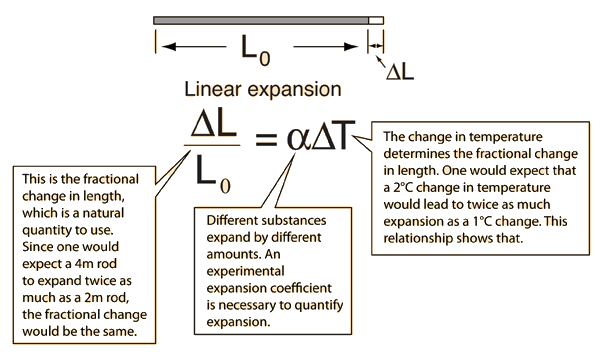Most introductory physics problems will look at the one-dimensional expansion of metallic objects due to an increase in temperature. As things warm up, they get longer. A simplest explanation for the physics would be that as the molecules warm up, they vibrate more, and take up more space. What is important to note here is that every material has its own coefficient of thermal expansion. Click here for a list. Note that these coefficients actually change a bit with temperature.

This of course, could also be extended to two-dimensional objects. Your workbook gives an equation for area expansion with little explanation. It is actually easy to figure out with a little algebra and some approximation. Hyperphysics has a nice explanation.
Usually we are talking about solid objects, but this can easily be extended to liquids.
There are some important notable exceptions to this rule. Water. Below 4 °C, water behaves strangely. Instead of contracting, it starts to expand, and this is due to the formation of ice crystals which actually take up more space.
An interesting application is the bimetallic strip. How does this work?
Before it is heated.
After it is heated.


